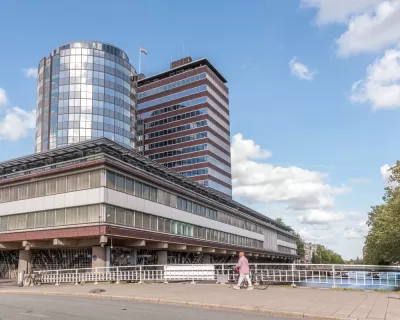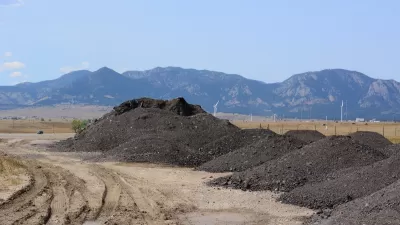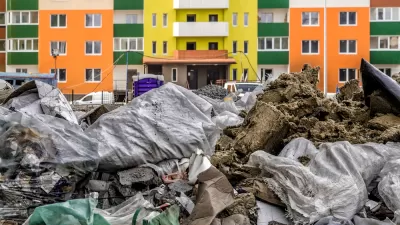The circular economy. Cradle-to-cradle. The regenerative economy. Whatever you call it, an approach to building that eliminates waste would transform the next generation of the built environment.

For as long as they exist, buildings of all sizes and shapes have always required a huge share of resources. Unfortunately buildings don't last forever, so they have always also produced a tremendous amount of waste.
"Typically, the fate of a building that has outlasted its usefulness is demolition, leaving behind a huge pile of waste, writes Jessica Camille Aguirre in a feature article for the New York Times.
With the planet plunging further into an environmental crisis, some designers are pushing for the building industry to adopt the tenants of the circular economy, also known as the regenerative or doughnut economy, as explained by Aguirre: "First, on a planet with limited resources and a rapidly warming climate, it’s crazy to throw stuff away; second, products should be designed with reuse in mind."
The article hinges on the example of a Dutch environmental engineer named Michel Baars, who leads a company disassembling a building known as the cigarette lighter in Amsterdam. The cigarette lighter is easier to disassemble and recycle now, according to the article, because the building was prefabricated and assembled in increments. European examples of the circular economy for building and design are in plentiful supply, but there are also U.S. cities setting policy in front of the curve. "In recent years, concern about waste and the climate has led cities like Portland, Ore., and Milwaukee to pass ordinances requiring certain houses to be deconstructed rather than demolished," reports Aguirre.
More details on the leaders in the cradle-to-cradle design, manufacture, and construction of the built environment, can be read at the source article, below, with numerous examples beyond and related to the work of Mr. Baars. The article also concludes with a survey asking readers to describe their relationship with recycling.
FULL STORY: How to Recycle a 14-Story Office Tower

Planetizen Federal Action Tracker
A weekly monitor of how Trump’s orders and actions are impacting planners and planning in America.

Map: Where Senate Republicans Want to Sell Your Public Lands
For public land advocates, the Senate Republicans’ proposal to sell millions of acres of public land in the West is “the biggest fight of their careers.”

Restaurant Patios Were a Pandemic Win — Why Were They so Hard to Keep?
Social distancing requirements and changes in travel patterns prompted cities to pilot new uses for street and sidewalk space. Then it got complicated.

Platform Pilsner: Vancouver Transit Agency Releases... a Beer?
TransLink will receive a portion of every sale of the four-pack.

Toronto Weighs Cheaper Transit, Parking Hikes for Major Events
Special event rates would take effect during large festivals, sports games and concerts to ‘discourage driving, manage congestion and free up space for transit.”

Berlin to Consider Car-Free Zone Larger Than Manhattan
The area bound by the 22-mile Ringbahn would still allow 12 uses of a private automobile per year per person, and several other exemptions.
Urban Design for Planners 1: Software Tools
This six-course series explores essential urban design concepts using open source software and equips planners with the tools they need to participate fully in the urban design process.
Planning for Universal Design
Learn the tools for implementing Universal Design in planning regulations.
Heyer Gruel & Associates PA
JM Goldson LLC
Custer County Colorado
City of Camden Redevelopment Agency
City of Astoria
Transportation Research & Education Center (TREC) at Portland State University
Camden Redevelopment Agency
City of Claremont
Municipality of Princeton (NJ)





























